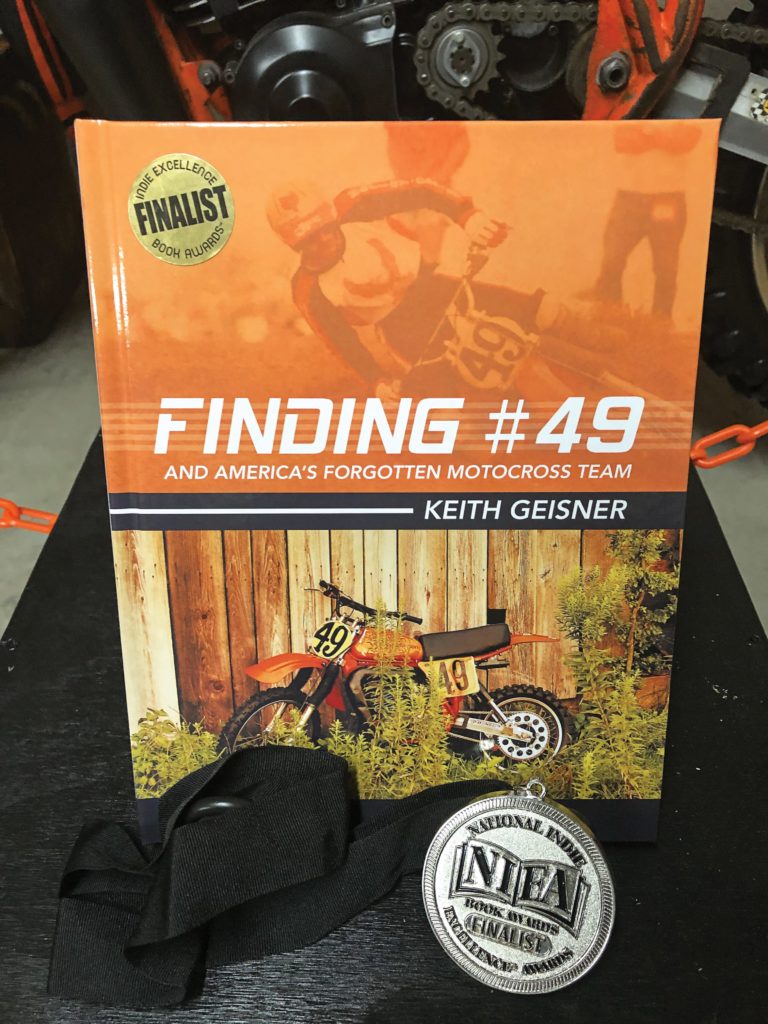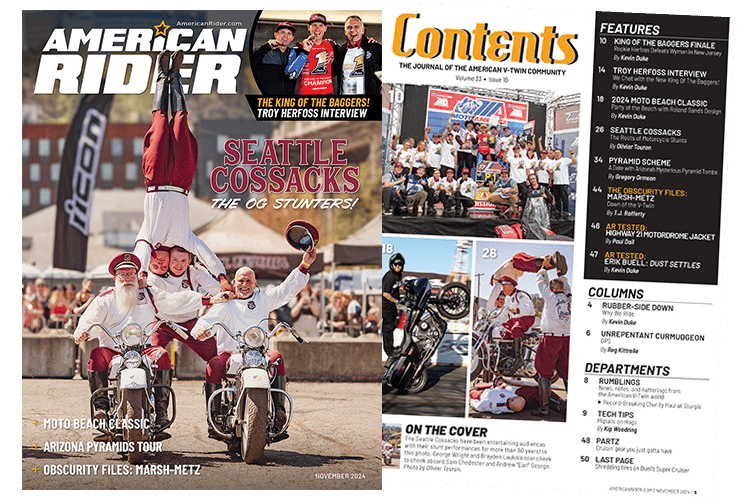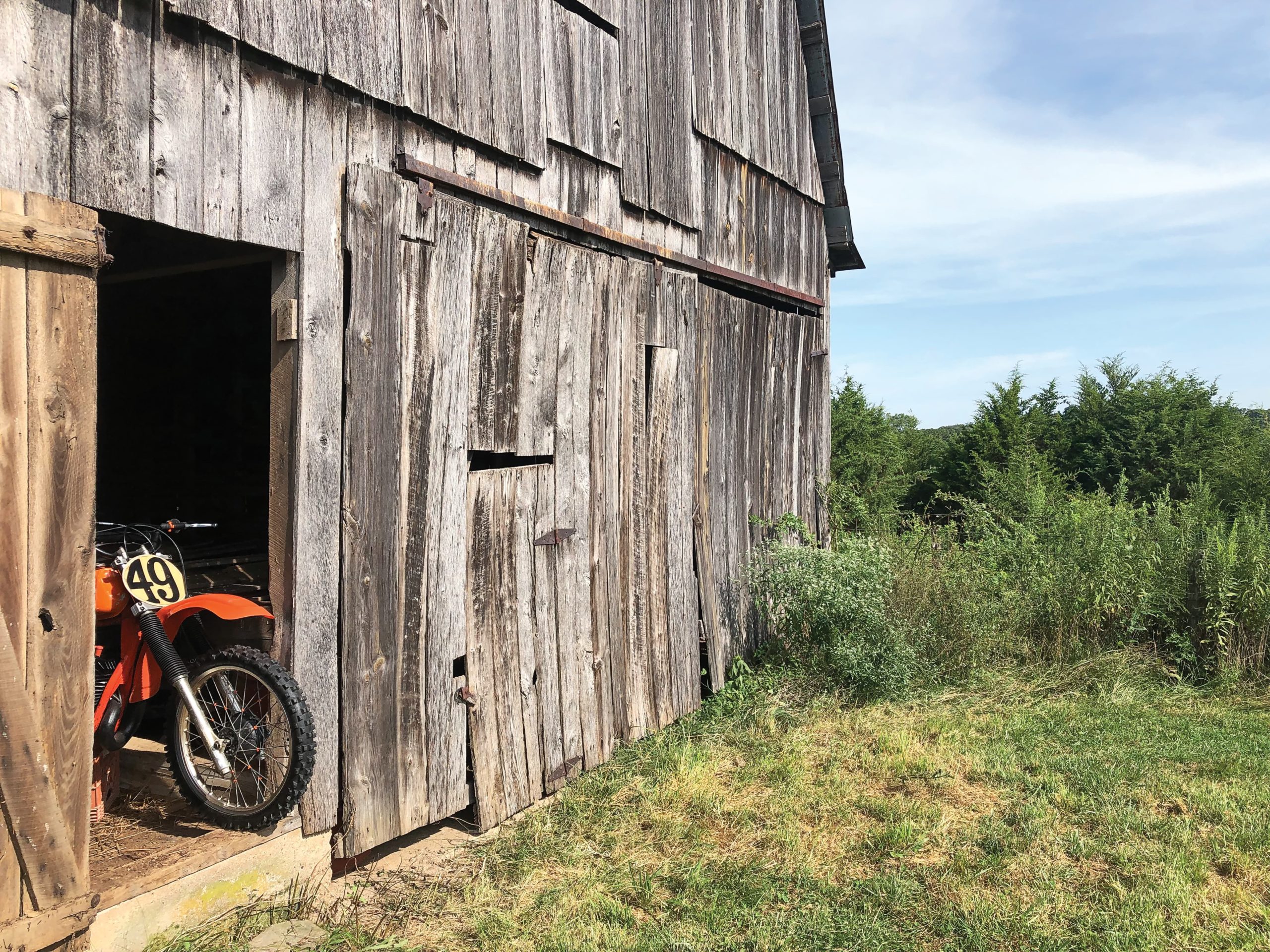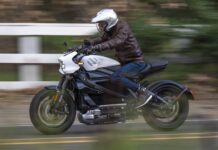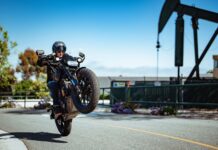
Finding #49: The Discovery, Purchase, Restoration and Celebration of a Piece of American MX History – Don Kudalski’s #49 factory Harley-Davidson MX250
Besides family and the birth of my son, precious few things in my life have been as impactful as my early motorcycling – and motocross – experiences. I literally rode my first bike – a Honda SL70 – into the ground, traded up two years later for an XR75, which I raced in ’74 and ’75, and kept at it during the next four decades on a string of Yamaha monoshockers, water-cooled KXs and various magazine testbikes. These days there’s a Yamaha YZ450F in my garage, which is entirely too powerful for me.
The 1970s truly were a Golden Era in motocross, especially in terms of bike development. Every year there’d be something new, something trick, something you just had to have – leading-axle forks (Maicos), laid-down shocks (Suzuki RMs) and monoshock rear suspension (Yamahas), etc., with water-cooling and linkage rear suspension on the horizon.
Not only was I riding and racing, I was reading every moto magazine I could get my hands on – and that meant I was reading about the AMA Nationals, Supercross events, USGPs and Trans-AMA races. I attended a handful of those, too, seeing my heroes and their ultra-trick factory bikes through the snow fences. To me, as a teenager, I might as well have been backstage with Frampton or The Stones.
Some of those bikes, of course, were the blaze orange factory Harley-Davidsons of Don Kudalski, Rex Staten and Marty Tripes, which stood out in the sea of Yamaha and Suzuki yellow, Honda red, Maico aluminum, Kawasaki green and Bultaco blue like a set of fluorescent road race leathers at Sturgis. They were orange, they were rare, and they were, for a couple years at least, a super-interesting part of the crazy pro motocross scene of that decade.
All of which makes Keith Geisner’s new book Finding #49 – and America’s Forgotten Motocross Team such a fascinating read and the reason we wanted to publish a teaser for all you Motor Company – and motocross – fans out there. Get the book…you’ll love it! — Mitch Boehm
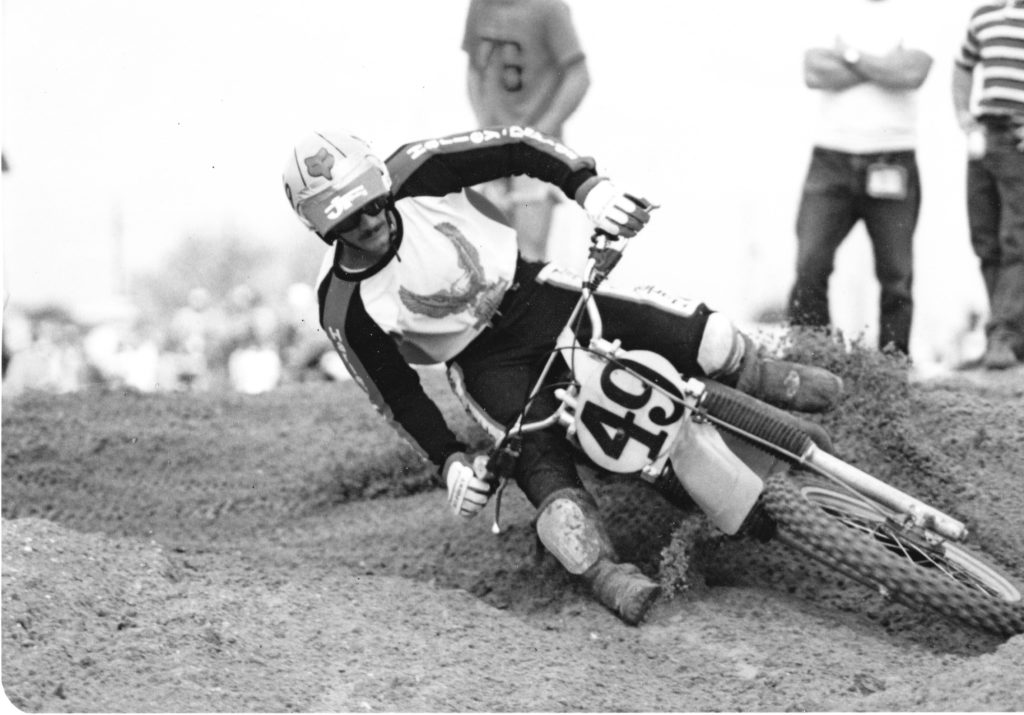
How often does one win the lottery? I’m not talking Powerball or Mega Millions. The true lottery is when something you’re deeply passionate about enters your life unexpectedly. And that happened to me. I was the guy devouring every book on motorcycles I could find…all while dreaming of the day when I’d find a special motorcycle in a barn.
Which is exactly what happened one September afternoon in 2016. It was a dirt bike, and not just any dirt bike, but a rare piece of Harley-Davidson motocross history. See, between 1975 and 1978, something unheard-of happened in the sport of professional motocross: Harley-Davidson, America’s number one manufacturer of heavyweight, air-cooled motorcycles, entered the competition, looking for younger riders and buyers, and a promotional boost in an area it’d rarely ventured before.
I’d been into motorcycles for as long as I can remember, riding dirtbikes on the family farm as a kid and, later, doing some buying, fixing and selling on my own. I’d wanted to attend Motorcycle Mechanics Institute but my parents insisted on a four-year degree, so during college I used my extra time to restore loads of Honda Z50s and CT70s. I ended up selling the entire collection (over 100 bikes) to a collector after graduating with an engineering degree, but the motorcycle bug was as strong as ever. I kept collecting and restoring once I started working in the automotive and aviation industries, and even did some hare scrambles and vintage motocross racing. The joy I got (and get) from bringing a vintage bike back to life is hard to explain, but it continues to thrill me. Which is why I wanted to share this particular story…

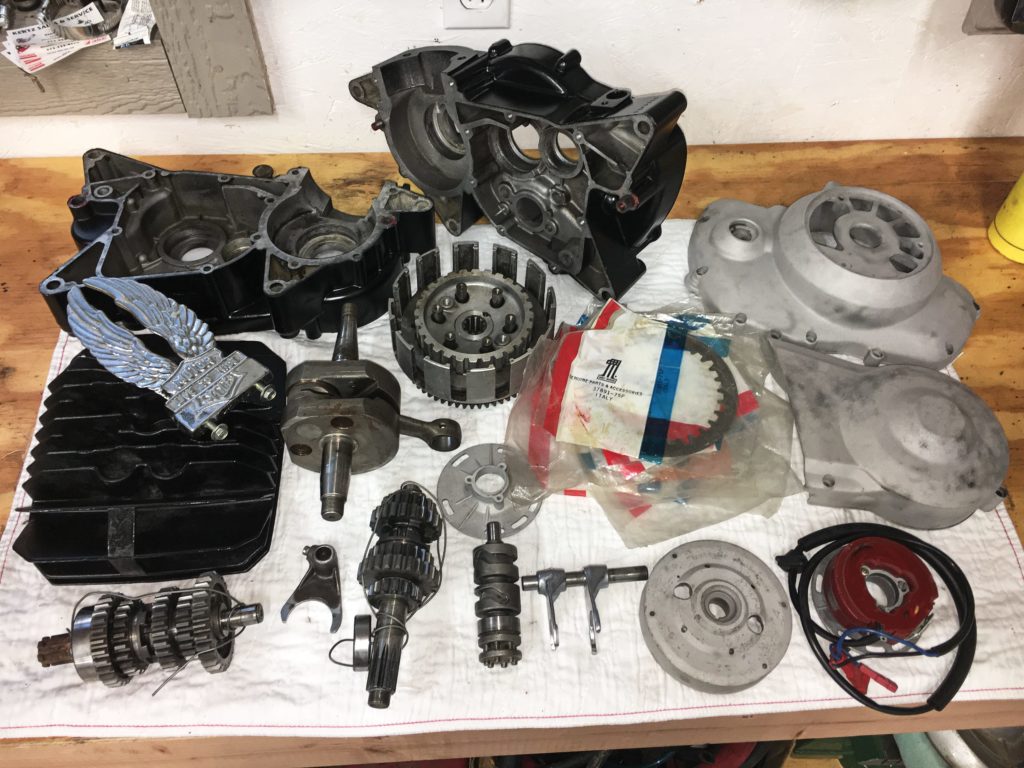

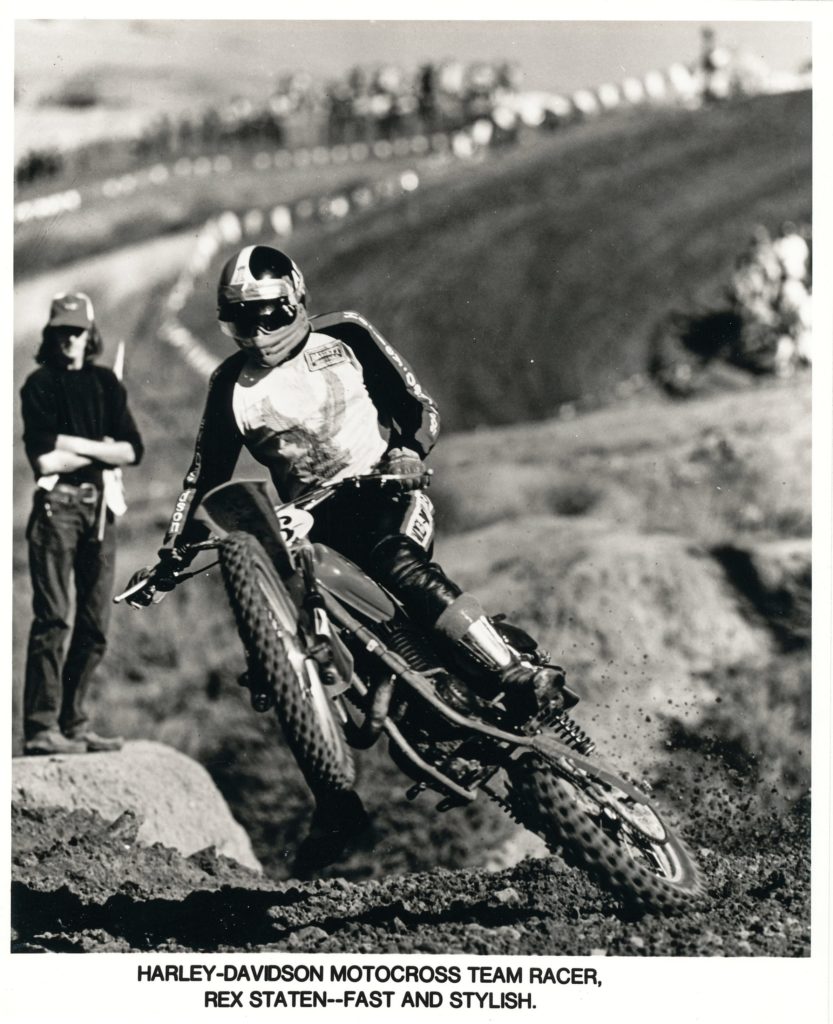
It all started on a Friday evening in September of 2016. It was getting late, and before bed I pulled up Craigslist to see what deals were out there. When I first saw the Harley-Davidson MX250 ad, I thought to myself, There’s a rare bike you don’t see every day. I knew very little about the 1978 Harley-Davidson MX250, only that around 1,000 were sold to the public and restored ones were going anywhere from $6,000 to $10,000. I emailed the seller a reasonable offer before I texted my buddy Jeff Allison, a fellow vintage bike enthusiast, and asked if he had seen the same ad. Then I did something I rarely did: I double-checked the email I had sent to the seller and realized I’d messed up my cell number, so I resent the correct one. (I often think of what might have happened, or not have happened, if I hadn’t double-checked.)
The next morning I got a phone call from the seller accepting my offer. He’d done his research and knew what the bike was worth restored, and was tired of all the lowball offers he’d been getting, and we made plans to meet the following day. I was excited, as I had never owned an MX250 and was looking forward to the restoration.
Meanwhile, Jeff called and told me someone had posted the Craigslist ad on a Facebook page that identified and appraised motocross bikes…and that the bike I was interested in buying might actually be a factory team bike, as it had parts and traits that looked much more factory/works-spec than production-spec. The most intriguing part was its number plate: 49. I found that #49 belonged to Don ‘Killer’ Kudalski, the last rider to race for the Harley-Davidson MX team, and the only rider to win a major AMA race for the team.
Whoa. To think I could possibly be the owner of a factory team bike was unimaginable. I couldn’t wait to see the bike up close, and Jeff was as excited as I was. To help me sleep that night I emailed the seller and told him I was looking forward to meeting him the next day. He wrote back saying the same, and I slept well that night.
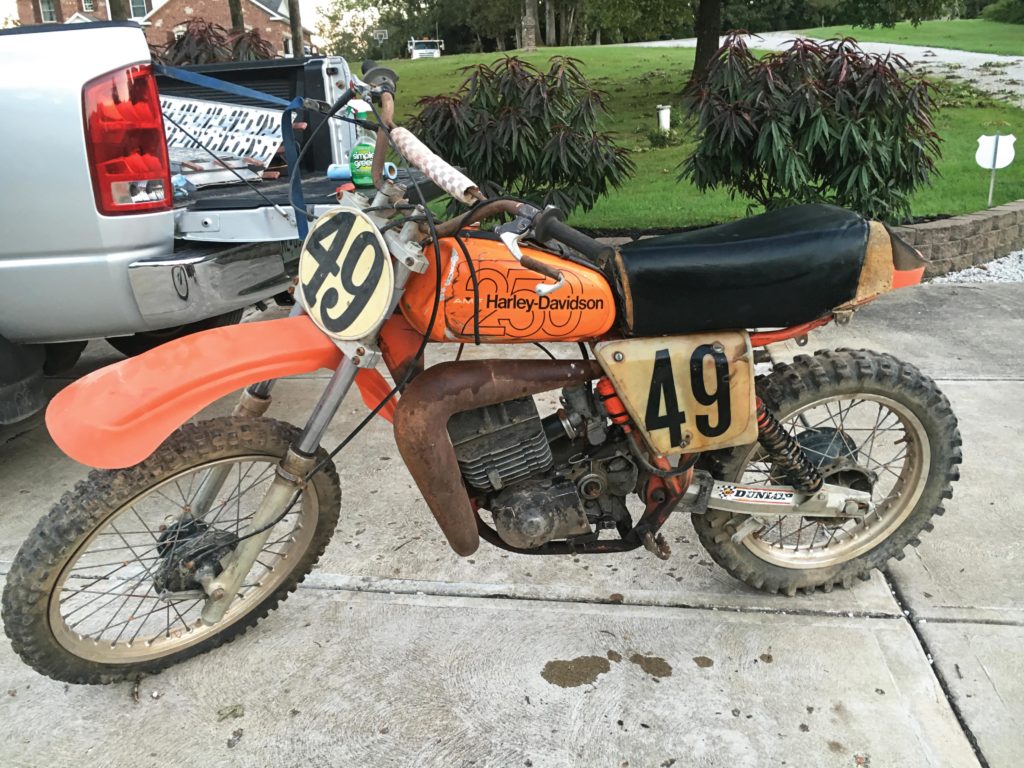
I had a vintage race the following day and my plan was to meet the seller and pick up the bike later that afternoon after the race. Jeff came with me and soon we were headed to a commuter parking lot off the interstate in central Missouri. As I approached the seller’s truck he climbed out and introduced himself – holding a pistol. “A precaution,” he said, “when dealing with strangers on Craigslist.” I told him I didn’t blame him and that we didn’t want any trouble.
I asked why he was selling the bike. He told me he didn’t ride motorcycles, and the bike, which his father had given him, had been sitting in his father’s barn since the mid 1980s. They’d tried to get it running at one point, but parts were hard to find. When Jeff and I inquired about the number 49 on the bike, he said he wasn’t sure, and had always assumed his dad had put them on. When I mentioned the bike appeared to have parts from the Harley- Davidson MX factory race team, he didn’t seem interested in the least. He didn’t ride and was married with young children.
All the way home Jeff and I discussed the bike’s possible history. When we arrived I put the number plates on correctly, took some photos and then began thinking seriously about the upcoming research, much of which would include online sites that focused on vintage motocross and Harley-Davidson’s MX250 in particular – but also on Aermacchi and Cagiva machines. Aermacchi was the Italian company AMF/Harley owned and which had actually spawned the MX250 before eventually becoming Cagiva after H-D sold it off in 1978.
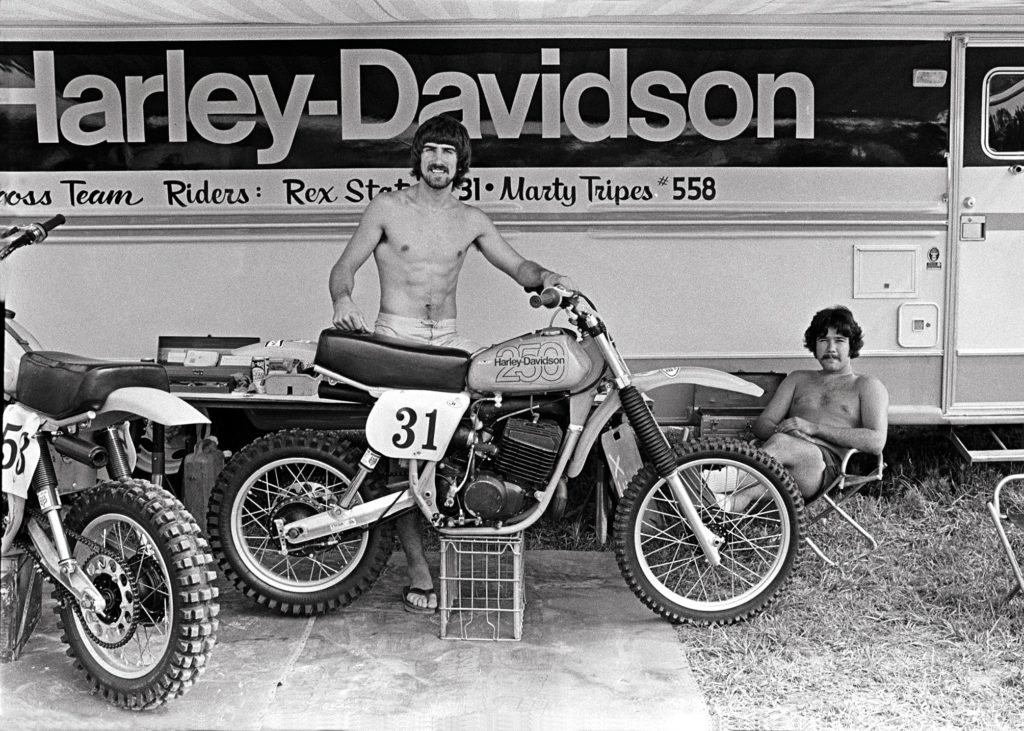
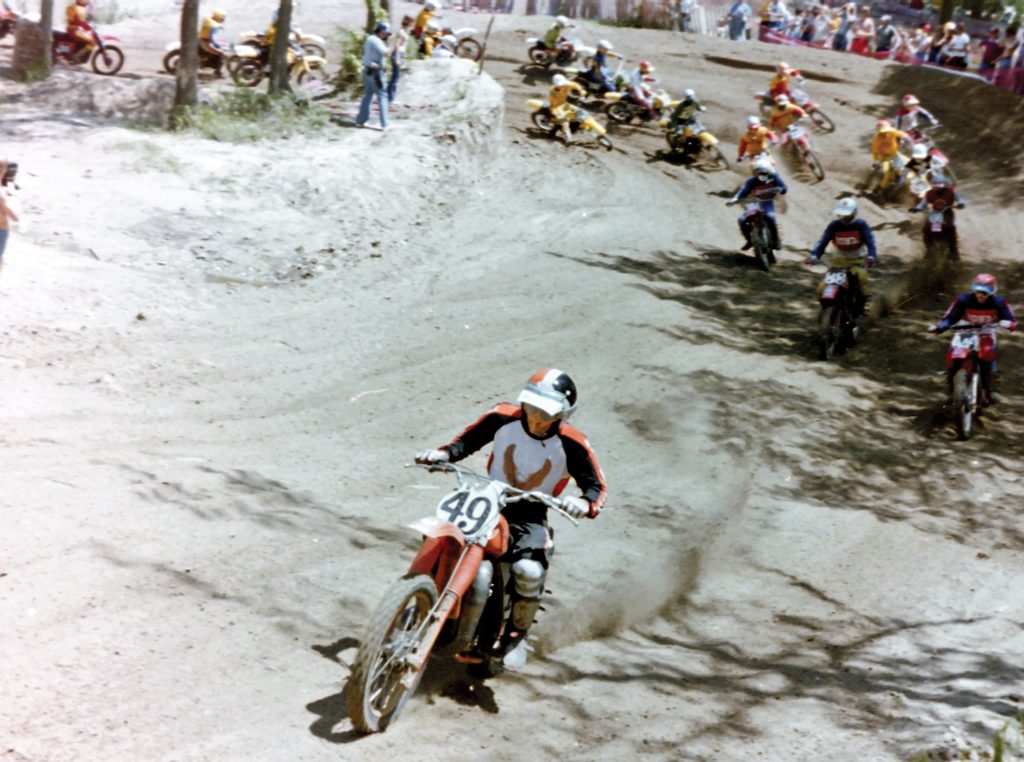
That evening I revisited the Vintage Motocross Buyers & Sellers Price Guide page, letting everyone know I ended up with the bike in the previously posted ad, and that my goal was to research its origin and decide its fate – total restoration or a really thorough preservation. The owner of the page was Joe Abbate, who also ran a restoration business called Cycle Therapy. We chatted a lot during the following months, and with Joe’s feedback I decided on the ‘preservation’ route. He told me to rub on that bike ‘until my fingers bled,’ get all the documentation I could and take care preserving the paint. I owe Joe a great debt of gratitude for his direction and assistance.
I also discovered a website that featured H-D motocrossers, parts and info on Harley MX team members. The site’s owner was Menalco Solis III, who helped me identify the engine in #49 and verify that what I had could very likely be a real factory racer fitted with a bunch of production parts after its racing days were over. He’d posted a story about the H-D team bike he owned and where it had come from, and did a great job capturing the history of it and the team. Over the next year Menalco and I would assist one another in our restorations, and would also solve a few mysteries surrounding the short-lived Harley-Davidson MX team.
Those months were a blur of internet research, phone calls to dealers, people I thought were previous owners of #49, people who actually were, factory mechanics and riders, team managers and other knowledgeable motocross folks from that era.
One particularly valuable site was Tom Fox’s Harley-Davidson MX Owners Facebook Group, which introduced me to a Florida racer named Mason Boyd, who knew Don ‘Killer’ Kudalski. Kudalski was Harley’s last factory pilot and the guy I was pretty sure raced my motorcycle in the 1978 Florida Winter Series, where he grabbed the Harley factory’s first and only National win in round three of the Series. Mason and I talked frequently, and he got Don and I together, as well. We communicated a lot during the following months, and it was through this collaboration – along with some photos Mason and Don had – that we became more certain than ever that what I had was indeed a factory race bike from 1977-’78.
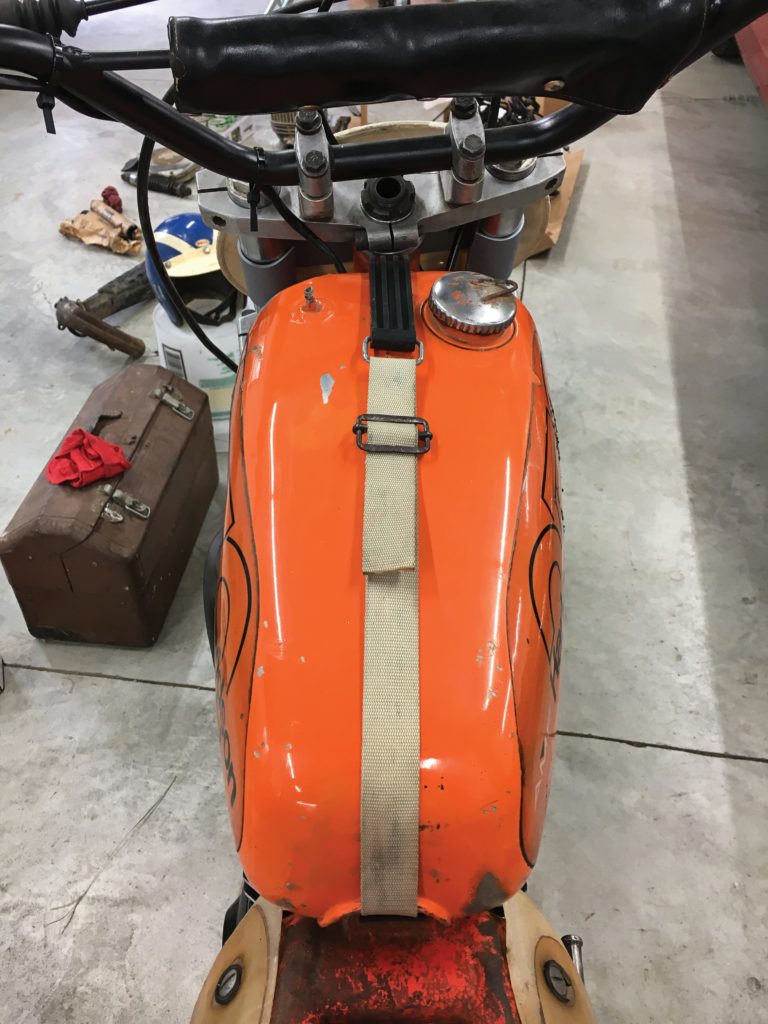
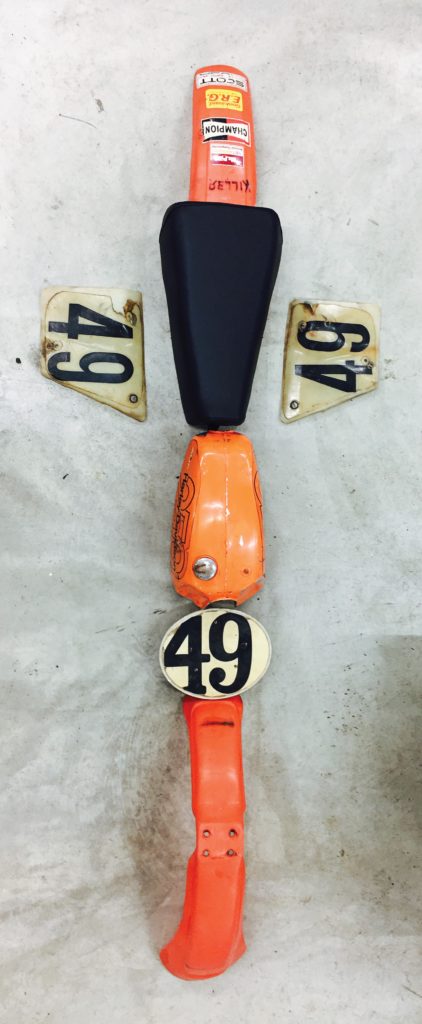
Team mechanic Tom Volin, who’d been Kudalski’s crew chief during that final run, helped confirm it. When we first spoke, Volin seemed certain I had a production bike, mainly because he’d been instructed to destroy some factory bikes at the end of the season. He said he’d urged Harley-Davidson to put the bikes in the museum, but his pleas had fallen on deaf ears. When I started naming off a few of #49’s features, however, his tune changed, and he said it sounded like I did indeed have a factory works bike. I asked if he had any photos, and the ones his wife Kathy sent were the clearest shots of Kudalski on his bike I’d ever seen. They were black and white and in sharp detail, and I could see many bits and pieces that were on my bike.


In between all this talking and researching and assembling of the puzzle that was this motorcycle, I disassembled the entire machine, engine included, and began inspecting and identifying parts, figuring out which ones were from the original race bike and which were standard production pieces. My bike already had a factory C&J frame, of which only 6-10 were ever built according to C&J’s Jeff Cole. Over time I was able to identify and purchase from select individuals the other special parts the bike had used in 1977 and ’78, which included Fox Airshox and the alloy Cross-Up swingarm utilized by the factory when Kudalski won his Winter Series race.
Aside from finishing #49 and getting it as close as possible to the spec it’d been in back in 1977 and ’78, a goal of mine was to gather as many of the team players as possible and meet up – and briefly display the bike – at the Harley-Davidson Museum in Milwaukee. And it happened, too, on February 23, 2018, thanks to a letter my wife Sara and I sent to Bill Davidson, son of Willie G. Davidson. Bill got the letter, left me a voicemail inviting us to the Museum, and had his very capable assistant Dara help organize things on their end.
On my end I contacted everyone who’d been involved in the restoration project and invited them to come along. Not everyone could, of course, and those who couldn’t sent their best wishes. But on the 23rd, myself, Bill Davidson, Tom Volin, Don Habermehl, Peter Zylstra, Brent Thompson and Clyde Denzer met at the Museum, checked out the bike, had lunch and traded stories about the bikes, the team, Harley’s efforts back in the late 1970s and how much fun everyone had despite the fact that the team wasn’t really around all that long. It was a fantastic get-together, and a day I’ll never forget.

I followed it up a few weeks later with a showing of the bike at the Mungenast Automobile and Motorcycle Museum (where I met motocross champion Broc Glover) and at the following night’s St. Louis Supercross, where #49 was displayed in Alex Moroz’s Legends and Heroes movable museum. I even got to meet Rex Staten the following year when he was inducted into the Trailblazers Hall of Fame at the group’s annual get-together in Carson, California. While there I also met Marty Tripes, Bob Hannah and Tommy Croft. Wow.
What does the future hold for #49? I’m not letting go of my lottery ticket anytime soon. I have a goal to meet as many of the team members as possible, including a visit with #49 himself, Don Kudalski. From my perspective, preserving #49 was only one step in the journey — meeting the people behind the bike and hearing about their experiences and passion for the sport has been the real adventure.
I also plan to continue showing the bike at special events. There are few things I enjoy more than spending time with fellow enthusiasts talking about bikes. I’ve met so many great people, whether riding, racing, or simply walking through a motorcycle museum. Who knows, maybe #49 will even end up on loan to a museum someday…
I would like to thank the Harley-Davidson motocross team members, photographers, and everyone else whose names appear throughout the pages of the book for helping me tell this story. I would also like to say a special thanks to my wife, Sara, for supporting me during this journey.
For a signed copy of Finding #49 by author Keith Geisner, find him on Facebook or email him at kgeisner@hotmail.com. Books can be purchased at Archwaypublishing.com or anywhere books are sold.
